Jiangchuan Liu
Generative AI for Multimedia Communication: Recent Advances, An Information-Theoretic Framework, and Future Opportunities
Aug 23, 2025Abstract:Recent breakthroughs in generative artificial intelligence (AI) are transforming multimedia communication. This paper systematically reviews key recent advancements across generative AI for multimedia communication, emphasizing transformative models like diffusion and transformers. However, conventional information-theoretic frameworks fail to address semantic fidelity, critical to human perception. We propose an innovative semantic information-theoretic framework, introducing semantic entropy, mutual information, channel capacity, and rate-distortion concepts specifically adapted to multimedia applications. This framework redefines multimedia communication from purely syntactic data transmission to semantic information conveyance. We further highlight future opportunities and critical research directions. We chart a path toward robust, efficient, and semantically meaningful multimedia communication systems by bridging generative AI innovations with information theory. This exploratory paper aims to inspire a semantic-first paradigm shift, offering a fresh perspective with significant implications for future multimedia research.
Generative Flow Networks for Personalized Multimedia Systems: A Case Study on Short Video Feeds
Aug 23, 2025Abstract:Multimedia systems underpin modern digital interactions, facilitating seamless integration and optimization of resources across diverse multimedia applications. To meet growing personalization demands, multimedia systems must efficiently manage competing resource needs, adaptive content, and user-specific data handling. This paper introduces Generative Flow Networks (GFlowNets, GFNs) as a brave new framework for enabling personalized multimedia systems. By integrating multi-candidate generative modeling with flow-based principles, GFlowNets offer a scalable and flexible solution for enhancing user-specific multimedia experiences. To illustrate the effectiveness of GFlowNets, we focus on short video feeds, a multimedia application characterized by high personalization demands and significant resource constraints, as a case study. Our proposed GFlowNet-based personalized feeds algorithm demonstrates superior performance compared to traditional rule-based and reinforcement learning methods across critical metrics, including video quality, resource utilization efficiency, and delivery cost. Moreover, we propose a unified GFlowNet-based framework generalizable to other multimedia systems, highlighting its adaptability and wide-ranging applicability. These findings underscore the potential of GFlowNets to advance personalized multimedia systems by addressing complex optimization challenges and supporting sophisticated multimedia application scenarios.
OmniSense: Towards Edge-Assisted Online Analytics for 360-Degree Videos
Aug 19, 2025Abstract:With the reduced hardware costs of omnidirectional cameras and the proliferation of various extended reality applications, more and more $360^\circ$ videos are being captured. To fully unleash their potential, advanced video analytics is expected to extract actionable insights and situational knowledge without blind spots from the videos. In this paper, we present OmniSense, a novel edge-assisted framework for online immersive video analytics. OmniSense achieves both low latency and high accuracy, combating the significant computation and network resource challenges of analyzing $360^\circ$ videos. Motivated by our measurement insights into $360^\circ$ videos, OmniSense introduces a lightweight spherical region of interest (SRoI) prediction algorithm to prune redundant information in $360^\circ$ frames. Incorporating the video content and network dynamics, it then smartly scales vision models to analyze the predicted SRoIs with optimized resource utilization. We implement a prototype of OmniSense with commodity devices and evaluate it on diverse real-world collected $360^\circ$ videos. Extensive evaluation results show that compared to resource-agnostic baselines, it improves the accuracy by $19.8\%$ -- $114.6\%$ with similar end-to-end latencies. Meanwhile, it hits $2.0\times$ -- $2.4\times$ speedups while keeping the accuracy on par with the highest accuracy of baselines.
Exploring Multimodal Foundation AI and Expert-in-the-Loop for Sustainable Management of Wild Salmon Fisheries in Indigenous Rivers
May 10, 2025

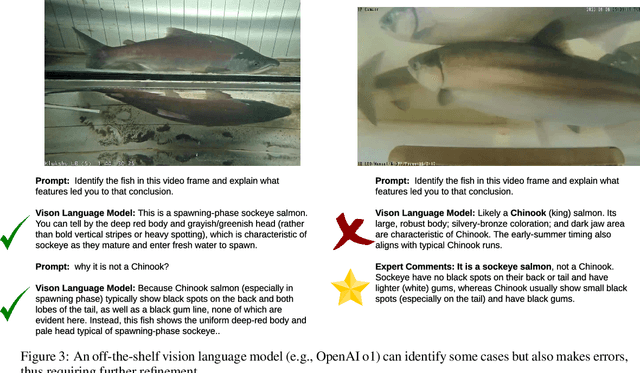
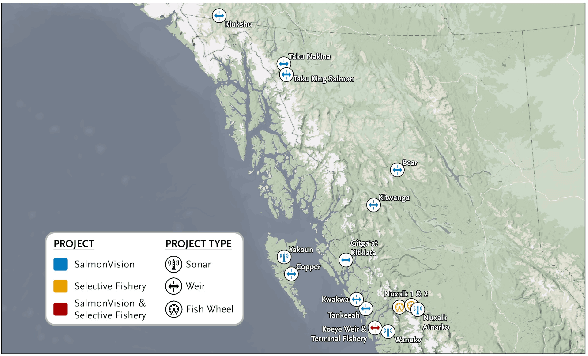
Abstract:Wild salmon are essential to the ecological, economic, and cultural sustainability of the North Pacific Rim. Yet climate variability, habitat loss, and data limitations in remote ecosystems that lack basic infrastructure support pose significant challenges to effective fisheries management. This project explores the integration of multimodal foundation AI and expert-in-the-loop frameworks to enhance wild salmon monitoring and sustainable fisheries management in Indigenous rivers across Pacific Northwest. By leveraging video and sonar-based monitoring, we develop AI-powered tools for automated species identification, counting, and length measurement, reducing manual effort, expediting delivery of results, and improving decision-making accuracy. Expert validation and active learning frameworks ensure ecological relevance while reducing annotation burdens. To address unique technical and societal challenges, we bring together a cross-domain, interdisciplinary team of university researchers, fisheries biologists, Indigenous stewardship practitioners, government agencies, and conservation organizations. Through these collaborations, our research fosters ethical AI co-development, open data sharing, and culturally informed fisheries management.
Towards Edge General Intelligence via Large Language Models: Opportunities and Challenges
Oct 16, 2024

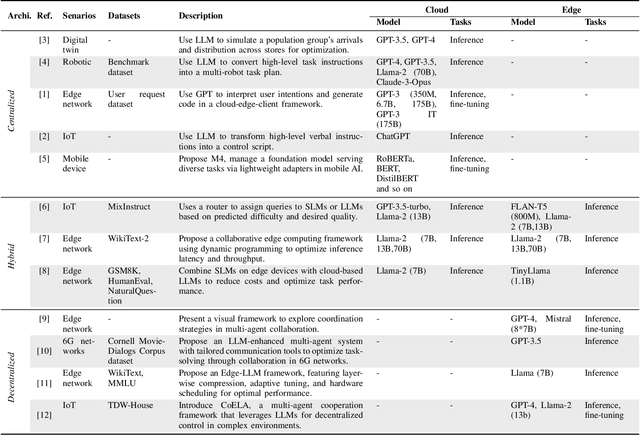
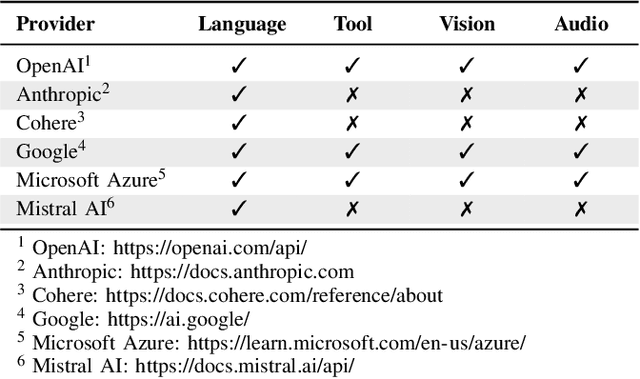
Abstract:Edge Intelligence (EI) has been instrumental in delivering real-time, localized services by leveraging the computational capabilities of edge networks. The integration of Large Language Models (LLMs) empowers EI to evolve into the next stage: Edge General Intelligence (EGI), enabling more adaptive and versatile applications that require advanced understanding and reasoning capabilities. However, systematic exploration in this area remains insufficient. This survey delineates the distinctions between EGI and traditional EI, categorizing LLM-empowered EGI into three conceptual systems: centralized, hybrid, and decentralized. For each system, we detail the framework designs and review existing implementations. Furthermore, we evaluate the performance and throughput of various Small Language Models (SLMs) that are more suitable for development on edge devices. This survey provides researchers with a comprehensive vision of EGI, offering insights into its vast potential and establishing a foundation for future advancements in this rapidly evolving field.
The Power of Bias: Optimizing Client Selection in Federated Learning with Heterogeneous Differential Privacy
Aug 16, 2024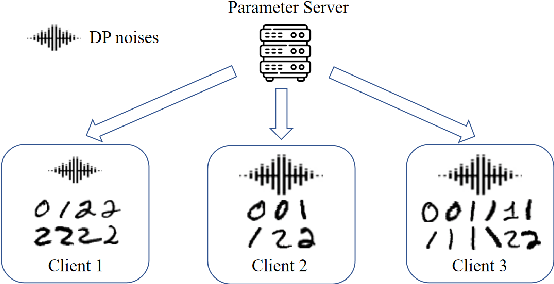
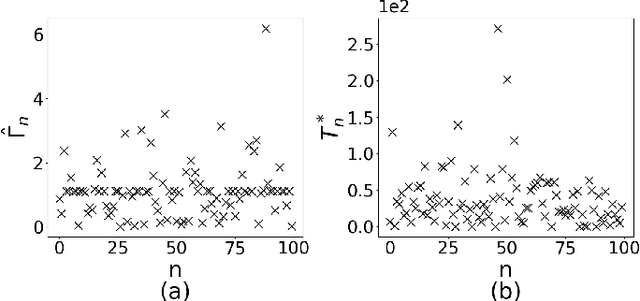

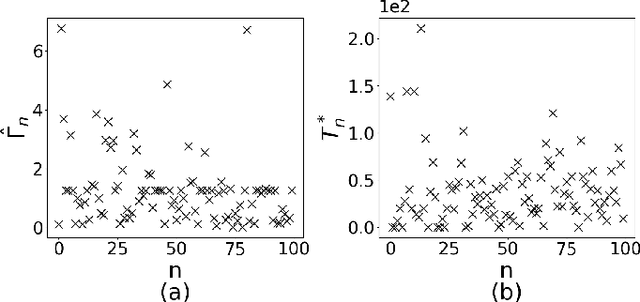
Abstract:To preserve the data privacy, the federated learning (FL) paradigm emerges in which clients only expose model gradients rather than original data for conducting model training. To enhance the protection of model gradients in FL, differentially private federated learning (DPFL) is proposed which incorporates differentially private (DP) noises to obfuscate gradients before they are exposed. Yet, an essential but largely overlooked problem in DPFL is the heterogeneity of clients' privacy requirement, which can vary significantly between clients and extremely complicates the client selection problem in DPFL. In other words, both the data quality and the influence of DP noises should be taken into account when selecting clients. To address this problem, we conduct convergence analysis of DPFL under heterogeneous privacy, a generic client selection strategy, popular DP mechanisms and convex loss. Based on convergence analysis, we formulate the client selection problem to minimize the value of loss function in DPFL with heterogeneous privacy, which is a convex optimization problem and can be solved efficiently. Accordingly, we propose the DPFL-BCS (biased client selection) algorithm. The extensive experiment results with real datasets under both convex and non-convex loss functions indicate that DPFL-BCS can remarkably improve model utility compared with the SOTA baselines.
Palantir: Towards Efficient Super Resolution for Ultra-high-definition Live Streaming
Aug 12, 2024Abstract:Neural enhancement through super-resolution deep neural networks opens up new possibilities for ultra-high-definition live streaming over existing encoding and networking infrastructure. Yet, the heavy SR DNN inference overhead leads to severe deployment challenges. To reduce the overhead, existing systems propose to apply DNN-based SR only on selected anchor frames while upscaling non-anchor frames via the lightweight reusing-based SR approach. However, frame-level scheduling is coarse-grained and fails to deliver optimal efficiency. In this work, we propose Palantir, the first neural-enhanced UHD live streaming system with fine-grained patch-level scheduling. In the presented solutions, two novel techniques are incorporated to make good scheduling decisions for inference overhead optimization and reduce the scheduling latency. Firstly, under the guidance of our pioneering and theoretical analysis, Palantir constructs a directed acyclic graph (DAG) for lightweight yet accurate quality estimation under any possible anchor patch set. Secondly, to further optimize the scheduling latency, Palantir improves parallelizability by refactoring the computation subprocedure of the estimation process into a sparse matrix-matrix multiplication operation. The evaluation results suggest that Palantir incurs a negligible scheduling latency accounting for less than 5.7% of the end-to-end latency requirement. When compared to the state-of-the-art real-time frame-level scheduling strategy, Palantir reduces the energy overhead of SR-integrated mobile clients by 38.1% at most (and 22.4% on average) and the monetary costs of cloud-based SR by 80.1% at most (and 38.4% on average).
SCALM: Towards Semantic Caching for Automated Chat Services with Large Language Models
May 24, 2024Abstract:Large Language Models (LLMs) have become increasingly popular, transforming a wide range of applications across various domains. However, the real-world effectiveness of their query cache systems has not been thoroughly investigated. In this work, we for the first time conducted an analysis on real-world human-to-LLM interaction data, identifying key challenges in existing caching solutions for LLM-based chat services. Our findings reveal that current caching methods fail to leverage semantic connections, leading to inefficient cache performance and extra token costs. To address these issues, we propose SCALM, a new cache architecture that emphasizes semantic analysis and identifies significant cache entries and patterns. We also detail the implementations of the corresponding cache storage and eviction strategies. Our evaluations show that SCALM increases cache hit ratios and reduces operational costs for LLMChat services. Compared with other state-of-the-art solutions in GPTCache, SCALM shows, on average, a relative increase of 63% in cache hit ratio and a relative improvement of 77% in tokens savings.
Large Language Model (LLM) for Telecommunications: A Comprehensive Survey on Principles, Key Techniques, and Opportunities
May 17, 2024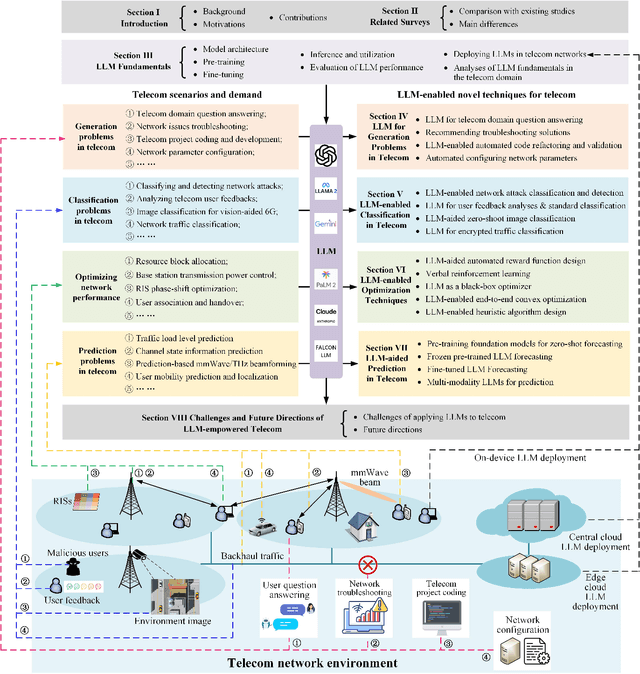
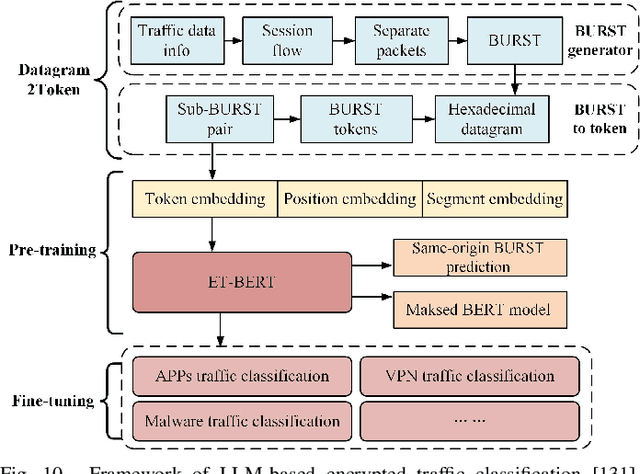
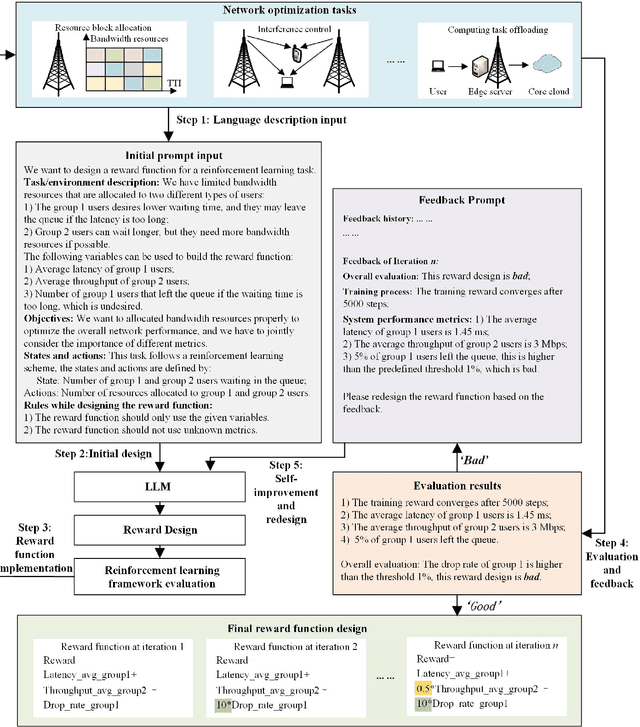
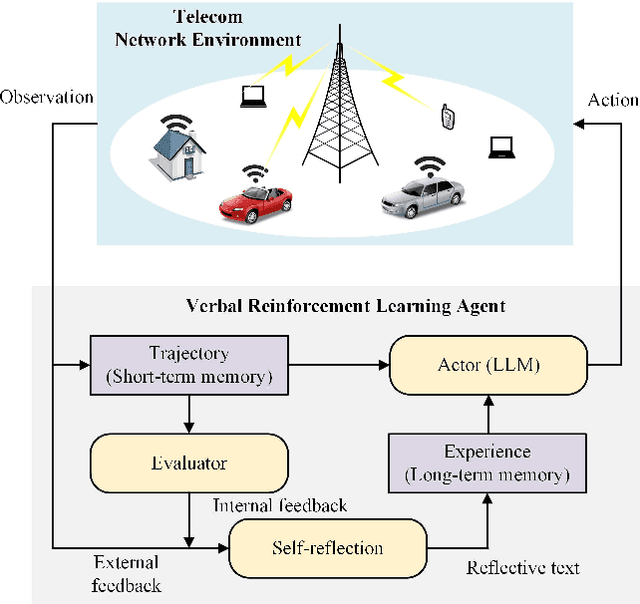
Abstract:Large language models (LLMs) have received considerable attention recently due to their outstanding comprehension and reasoning capabilities, leading to great progress in many fields. The advancement of LLM techniques also offers promising opportunities to automate many tasks in the telecommunication (telecom) field. After pre-training and fine-tuning, LLMs can perform diverse downstream tasks based on human instructions, paving the way to artificial general intelligence (AGI)-enabled 6G. Given the great potential of LLM technologies, this work aims to provide a comprehensive overview of LLM-enabled telecom networks. In particular, we first present LLM fundamentals, including model architecture, pre-training, fine-tuning, inference and utilization, model evaluation, and telecom deployment. Then, we introduce LLM-enabled key techniques and telecom applications in terms of generation, classification, optimization, and prediction problems. Specifically, the LLM-enabled generation applications include telecom domain knowledge, code, and network configuration generation. After that, the LLM-based classification applications involve network security, text, image, and traffic classification problems. Moreover, multiple LLM-enabled optimization techniques are introduced, such as automated reward function design for reinforcement learning and verbal reinforcement learning. Furthermore, for LLM-aided prediction problems, we discussed time-series prediction models and multi-modality prediction problems for telecom. Finally, we highlight the challenges and identify the future directions of LLM-enabled telecom networks.
Optimizing Mobile-Friendly Viewport Prediction for Live 360-Degree Video Streaming
Mar 05, 2024



Abstract:Viewport prediction is the crucial task for adaptive 360-degree video streaming, as the bitrate control algorithms usually require the knowledge of the user's viewing portions of the frames. Various methods are studied and adopted for viewport prediction from less accurate statistic tools to highly calibrated deep neural networks. Conventionally, it is difficult to implement sophisticated deep learning methods on mobile devices, which have limited computation capability. In this work, we propose an advanced learning-based viewport prediction approach and carefully design it to introduce minimal transmission and computation overhead for mobile terminals. We also propose a model-agnostic meta-learning (MAML) based saliency prediction network trainer, which provides a few-sample fast training solution to obtain the prediction model by utilizing the information from the past models. We further discuss how to integrate this mobile-friendly viewport prediction (MFVP) approach into a typical 360-degree video live streaming system by formulating and solving the bitrate adaptation problem. Extensive experiment results show that our prediction approach can work in real-time for live video streaming and can achieve higher accuracies compared to other existing prediction methods on mobile end, which, together with our bitrate adaptation algorithm, significantly improves the streaming QoE from various aspects. We observe the accuracy of MFVP is 8.1$\%$ to 28.7$\%$ higher than other algorithms and achieves 3.73$\%$ to 14.96$\%$ higher average quality level and 49.6$\%$ to 74.97$\%$ less quality level change than other algorithms.
 Add to Chrome
Add to Chrome Add to Firefox
Add to Firefox Add to Edge
Add to Edge